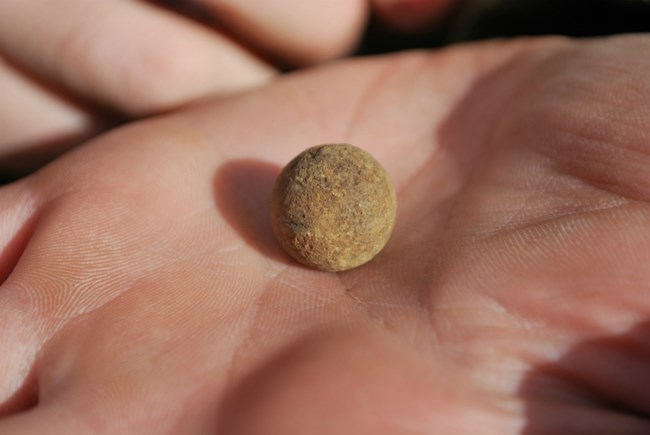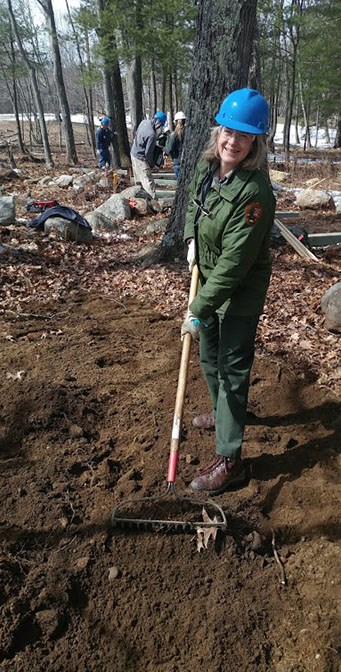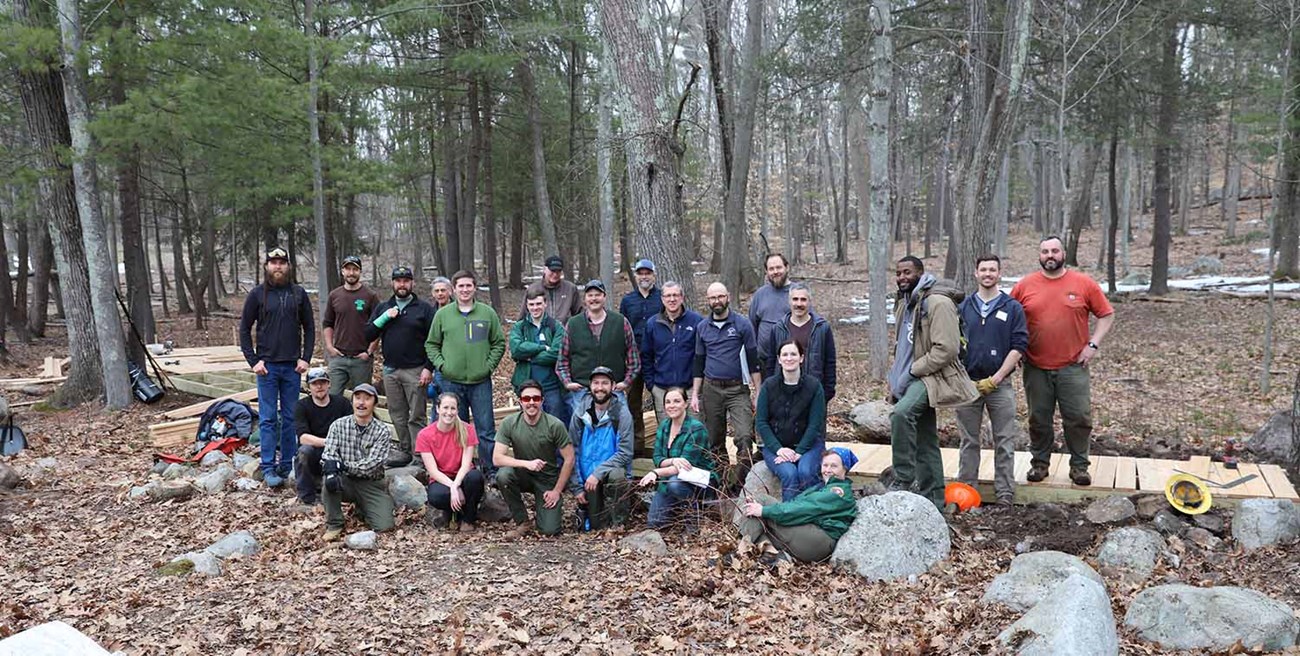Using an integrated archeological approach, the Parker’s Revenge Archeological Project (PRAP) reconstructed the historical 1775 landscape to identify the location of the battle and provide insight into the tactics used during the engagement.
Article
Picturing Parker's Revenge Battle Site
Picture yourself on a trail leading to the site of a historically significant event. Do you wonder how the trail came to be?
Archeologists have recently mapped the Parker’s Revenge battle site, part of Minute Man National Historical Park, revealing new details of the tactical engagement between the British Regular column and the Lexington Militia on the first day of the American Revolution. The archeological study was the first phase of a project that began in 2013. It provided the background information for the development of a new trail and interpretive and education materials.
In March of 2018, National Park Service staff and partners participated in a workshop at the park to improve their skills and techniques in creating accessible, unpaved trails and boardwalks. During the field training component of the workshop, participants gained practical experience as they contributed to work on the new interpretive trail at Parker’s Revenge site.
Archeological Investigations Discover New Evidence to Map and Interpret the Parker's Revenge Battle
In the early morning of April 19, 1775, Captain John Parker and the Lexington militia were assembled on the Lexington Green as the British Regular column advanced along Battle Road. Historians believe that the Lexington militia was following the order to disband when the British Regulars opened fire on them, killing ten men and wounding eight. The British Regular column then advanced to Concord, where the subsequent battle at North Bridge marked the beginning of the American Revolutionary War.
After the British Regular column left the Lexington Green, the community of Lexington buried their dead and tended to their wounded. Captain John Parker rallied his men and, at mid-morning they headed out to the boundary of their town. The militia settled into position to wait for the return of the British column, hidden in a woodlot along Battle Road, just past a nearly right angle bend in the road that would force the column to cross over a bridge – a perfect tactical advantage. There, perhaps 30 or more men prepared to confront the British Regular column of 800 soldiers for the second time in a single day.
Prior to 2013, important questions about the battle remained unanswered. While the local reenactment community and the Minute Man National Historical Park held a longstanding interest in the engagement, and despite a robust body of historical information, researchers did not know the precise location or details of the engagement.
Using an integrated archeological approach, the Parker’s Revenge Archeological Project (PRAP) reconstructed the historical 1775 landscape that enabled targeting and identification of the location of the battle, as well as insight into the tactics used during that engagement.
Using an integrated archeological approach, the Parker’s Revenge Archeological Project (PRAP) reconstructed the historical 1775 landscape that enabled targeting and identification of the location of the battle, as well as insight into the tactics used during that engagement.

NPS Photo
The main goals of PRAP were achieved through an integrated approach that defined the historic landscape and land use, applied "Key Terrain Observation and Fields of Fire, Cover and Concealment, Obstacles, Avenues of Approach" (KOCOA) battlefield methods for site analysis, and actively engaged with the local community to interpret the new evidence recovered through archaeological investigations.
The requested video is no longer available.
Accessible Trails Workshop
In March 2018, Minute Man National Historical Park hosted an Accessible Unpaved Trails and Boardwalk Training. Through field and classroom sessions, NPS employees learned about stabilizer and binder products used to enhance accessibility and durability of unpaved trails. Participants also expanded their skills and techniques to design, build, and lead unpaved stabilized trail projects. 
NPS Photo
The new trail gives visitors access to the perimeter of the battle site in order to understand how locations and features of the landscape played a role in the battle history. Interpretive waysides recreate the tactical landscape and put the visitor in the context of the battle scene.
A lower boardwalk will lead visitors to the British position, constructed above the ground surface to avoid disturbing a wetland. A stabilized, unpaved trail will lead to the colonial position on a nearby ridgeline. The trail is designed to help visitors retrace the footsteps of the British vanguard and Lexington militia who fought here. Visitors on the upper and lower sections of trail will find themselves nearly face-to-face with each other and with an image of the April 19, 1775 events on the cultural landscape.
Upcoming Events
In addition to the trail development, three new interpretive features at the park will highlight the history and discovery of the site of Parker's Revenge:- Three new wayside exhibit panels will be added to the landscape; one along the Battle Road Trail (with audio component), one to mark the position of the British soldiers at Parker's Revenge, and one at the position of Parker's men on the ridge.
- An exhibit in the Minute Man Visitor Center in Lexington will feature a mural, archeological artifacts discovered during the investigation, and an interactive display.
- Park Ranger guided walks to the Parker's Revenge site depart from Minute Man Visitor Center (daily at 11:30 and 2:30, beginning June 16)
Learn More
- Minute Man National Historical Park website
- "Archeology Report Released on Parker's Revenge" (News Release, 11/14/16)
- "Battlefield Archaeology: Rediscovering Parker's Revenge" - In this video by the American Battlefield Trust, Meg Watters Wilkes reveals what was discovered about the Battle of Lexington and Concord from the Parker's Revenge Archaeological Project.
- What are cultural landscapes? Explore this subject
- Cultural Landscape Inventory reports for Battle Road Unit and Nelson Farm Area
Last updated: May 17, 2019



